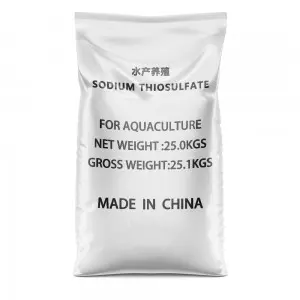



used of sodium hydroxide
The Uses of Sodium Hydroxide An Essential Chemical Compound
Sodium hydroxide (NaOH), commonly known as caustic soda or lye, is a highly versatile and widely used chemical compound in various industries. As a strong base, it is critical in a wide range of applications, from manufacturing to household products. Its effectiveness is due to its capacity to react with acids and neutralize them, making it indispensable in both industrial and everyday contexts.
Industrial Applications
One of the most significant uses of sodium hydroxide is in the production of various chemicals. It serves as a key ingredient in the manufacturing of products such as soap and detergents. In soap making, sodium hydroxide is used in the saponification process, where fats and oils react to produce glycerin and soap. This reaction showcases the compound's importance in creating cleaning agents that are fundamental to personal care and household cleaning.
In the paper and pulp industry, sodium hydroxide is employed to process wood chips into pulp, which is then used to manufacture paper. The chemical acts to break down lignin, a complex organic polymer found in wood, enabling the separation of cellulose fibers. This process is crucial for producing high-quality paper products and underlining sodium hydroxide's role in sustainable practices.
Another significant use of sodium hydroxide is in water treatment processes. It is utilized to adjust the pH levels of drinking water, ensuring that it is safe for consumption. By neutralizing acidic conditions, sodium hydroxide helps prevent corrosion in pipes and other components of water distribution systems. This application is essential not only for public health but also for maintaining the integrity of municipal water supplies.
Food Industry
used of sodium hydroxide

In the food industry, sodium hydroxide plays a unique role. It is used in the processing of various food items, such as olives, pretzels, and baked goods. For example, pretzels are often dipped in a sodium hydroxide solution before baking to achieve their distinct color and flavor. Additionally, the compound is employed as a pH regulator in certain food products, ensuring taste and preserving quality.
Laboratory Uses
Sodium hydroxide is prevalent in laboratories, where it is used for titration processes in determining acid concentrations. Its ability to neutralize acids makes it an essential reagent in many experiments. Furthermore, due to its strong alkaline nature, it is often used in cleaning laboratory equipment, effectively removing organic contaminants and residues.
Safety and Handling
Despite its usefulness, sodium hydroxide is a highly caustic substance that requires careful handling. It can cause severe burns upon contact with skin, and its fumes can be harmful if inhaled. Proper safety measures, including the use of gloves, goggles, and protective clothing, are essential when working with this compound. It is crucial to educate employees and users about the dangers associated with sodium hydroxide, ensuring that safety protocols are followed at all times.
Conclusion
Sodium hydroxide is an essential chemical compound that finds applications across various industries, including manufacturing, food processing, water treatment, and laboratory research. Its ability to act as a strong base allows it to neutralize acids and facilitate numerous chemical processes, making it invaluable in both industrial and consumer applications. While its benefits are extensive, the potential hazards associated with its use highlight the importance of handling sodium hydroxide with care. Overall, its versatility and effectiveness as a chemical agent solidify sodium hydroxide's status as a cornerstone in modern industry and daily life.
-
Why Sodium Persulfate Is Everywhere NowNewsJul.07,2025
-
Why Polyacrylamide Is in High DemandNewsJul.07,2025
-
Understanding Paint Chemicals and Their ApplicationsNewsJul.07,2025
-
Smart Use Of Mining ChemicalsNewsJul.07,2025
-
Practical Uses of Potassium MonopersulfateNewsJul.07,2025
-
Agrochemicals In Real FarmingNewsJul.07,2025
-
Sodium Chlorite Hot UsesNewsJul.01,2025










